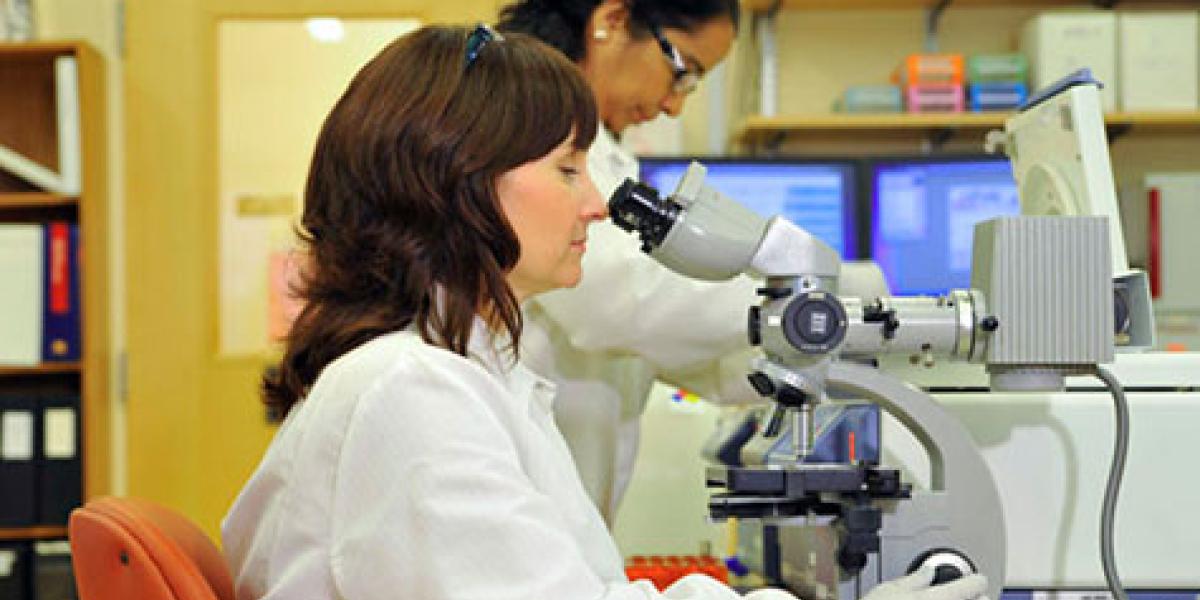Often when people hear the term ergonomics, they think of computer workstations, but laboratory workers also need to be aware of their particular workstations and how to maintain proper postures while conducting business in sometimes awkward positions. Laboratory workers are at risk for repetitive motion injuries during routine laboratory procedures, such as pipetting, working at microscopes, operating microtomes, and using cell counters. Repetitive motion injuries develop over time and occur when muscles and joints are stressed, tendons are inflamed, nerves are pinched, and blood flow is restricted.
Working in awkward positions in laboratory hoods or biosafety cabinets also can present ergonomic problems. You can minimize occupational injuries and simultaneously and improve comfort, productivity, and job satisfaction by becoming familiar with ways to control laboratory ergonomics-related risk factors. In addition to general ergonomic guidance, these tips should help make laboratory workers aware of simple adjustments that can be made.
Using Fume Hoods and Biosafety Cabinets
- Remove false fronts and supplies from under the work area.
- Use anti-fatigue floor mats if standing for long periods.
- Adjust your chair height and sit back in the seat using the backrest.
- Use footrests when possible for leg support.
- Avoid resting your forearms on hard edges.
- Pad forearms, elbows, or hard edges to avoid interference with air flow.
- Position work supplies as close as possible.
- Place equipment on approved turntables for easy retrieval.
- Use diffused lighting to limit glare.
- Take short breaks to stretch muscles and relieve forearm and wrist pressure.
Using a Microscope
- Use a chair that provides good back support.
- Sit close to your work surface.
- Remove false fronts and supplies from under the bench work area.
- Avoid leaning on hard edges.
- Pad forearms and edges.
- Keep elbows close by your sides.
- Work with wrists in straight, neutral positions.
- Adjust your chair, workbench, or microscope as needed to maintain an upright head position.
- Elevate, tilt, or move the microscope close to the edge of the counter to avoid bending your neck.
- Use adjustable eyepieces or mount your microscope on a 30° angle stand for easier viewing.
- Keep scopes repaired and clean.
- Spread microscope work throughout the day and among several people, if possible.
- Take breaks. Every 15 minutes, close your eyes or focus on something in the distance. Every 30-60 minutes, get up to stretch and move.
Pipetting
- Use anti-fatigue floor mats if standing for long periods.
- Sit supported against the backrest of your chair.
- Sit or stand close to your work at bench cut outs.
- Adjust your chair to work height rather than jutting out your chin or bending your neck down when working.
- Elevate your chair rather than reaching up to the pipette.
- Do not twist or rotate your wrist while pipetting.
- Alternate or use both hands to pipette.
- Hold the pipette with a relaxed grip.
- Use minimal pressure while pipetting.
- Use light force or two hands to change tips.
- Use low profile tubes, solution containers, and waste receptacles.
- Select a lightweight pipette sized for your hand.
- Use pipettes with finger aspirators and thumb dispensers to reduce thumb strain.
- Use latch-mode or electronic pipettes for repetitive pipetting.
- Take a 1- to 2-minute break after every 20 minutes of pipetting.

